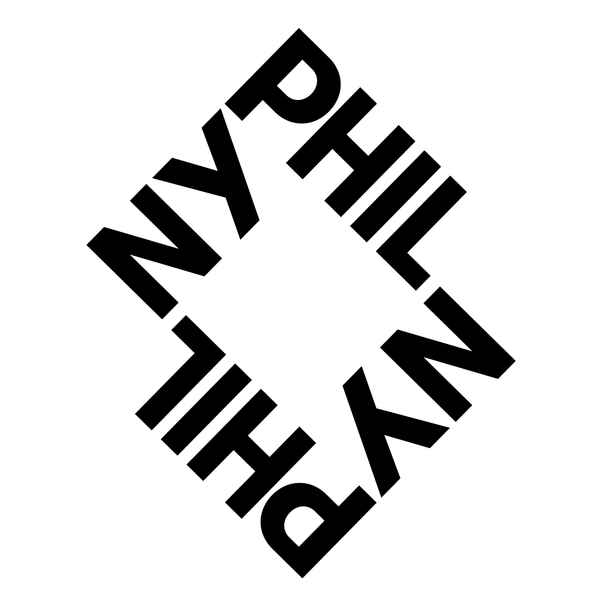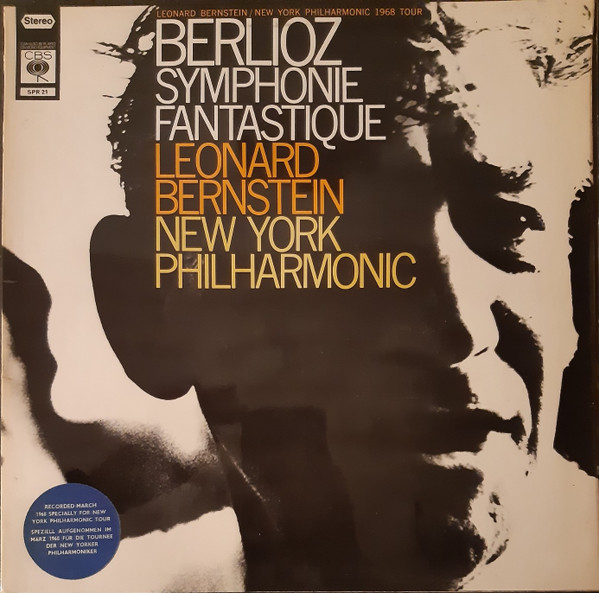New York Philharmonic
About New York Philharmonic
Founded in 1842, the New York Philharmonic is the oldest symphony orchestra in the United States. The Philharmonic’s current home is David Geffen Hall, Lincoln Center.
Each season, the Orchestra connects with up to 50 million music lovers through live concerts in New York and around the world; international broadcasts on television, radio, and online; recordings; and education programs.
Complete list of Music Directors:
• Ureli Corelli Hill, Henry Timm, Denis Etienne, William Alpers, George Loder, Louis Wiegers and Alfred Boucher (1842–1849)
• Theodore Eisfeld (1849–1854) / Theodore Eisfeld & Henry Timm (1854–1855)
• Carl Bergmann (1855–1856, 1858–1859, 1865–1876)
• Theodore Eisfeld (1856–1858) / Carl Bergmann & Theodore Eisfeld (1859–1865)
• Leopold Damrosch (1876–1877)
• Theodore Thomas (4) (1877–1878, 1879–1891)
• Adolf Neuendorff (1878–1879)
• Anton Seidl (1891–1898)
• Emil Paur (1898–1902)
• Walter Damrosch (1902–1903)
• Vasily Ilyich Safonov (1906–1909)
• Gustav Mahler (1909–1911)
• Josef Stránský (1911–1923)
• Willem Mengelberg (1922–1930)
• Arturo Toscanini (1928–1936)
• Sir John Barbirolli (1936–1941)
• Artur Rodziński (1943–1947)
• Bruno Walter (music advisor, 1947–1949)
• Leopold Stokowski (co-principal conductor, 1949–1950)
• Dimitri Mitropoulos (1949–1958)
• Leonard Bernstein (1958–1969) [named Laureate Conductor in 1969]
• George Szell (music advisor, 1969–1970)
• Pierre Boulez (1971–1977)
• Zubin Mehta (1978–1991)
• Kurt Masur (1991–2002) [named Music Director Emeritus in 2002]
• Lorin Maazel (2002–2009)
• Alan Gilbert (2) (2009–2017)
• Jaap van Zweden (2018–2024)
• Gustavo Dudamel (designate, effective 2026)
The orchestra was founded in 1842 by local musicians and led by American-born Ureli Corelli Hill. The orchestra was originally called the Philharmonic Society of New York. The first concert of the Philharmonic Society took place on December 7, 1842, in the Apollo Rooms on lower Broadway. After only a dozen public performances, the Philharmonic organized a concert to raise funds to build a new music hall. The centerpiece was the American premiere of Beethoven’s Symphony No. 9, to take place at Castle Garden on the southern tip of Manhattan. About 400 instrumental and vocal performers gathered for this premiere, which was conducted by George Loder. The choral libretto was translated into what would be the first English-language performance. During the Philharmonic’s first seven seasons, seven musicians alternated the conducting duties. In addition to Ureli Corelli Hill, Henry Christian Timm, and Denis Etienne, there were William Alpers, George Loder, Louis Wiegers and Alfred Boucher. In 1849 Theodore Eisfeld was installed as the only conductor for the season. Eisfeld was succeeded by Carl Bergmann, who conducted from 1850-1855. Eisfeld returned to conduct the Philharmonic Society for the 1856–1857 and 1857–1858 seasons, but Bergmann returned to the podium in 1859, and shared the podium with Eisfeld between 1859 and 1865. In 1865 Eisfeld returned to Europe, and Bergmann continued as sole conductor of the Philharmonic Society until his death in 1876.
Leopold Damrosch (Franz Liszt’s former concertmaster at Weimar) served as conductor of the Philharmonic for the 1876/77 season. But, failing to win support from the Philharmonic’s public, he left to create the rival Symphony Society of New York in 1878 (later renamed the New York Symphony Orchestra). Upon his death in 1885, his son Walter Damrosch took over and continued the competition with the old Philharmonic. It was Walter who would convince Andrew Carnegie that New York needed a first-class concert hall. On May 5, 1891, both Walter and Russian composer Pyotr Ilyich Tchaikovsky conducted at the inaugural concert of the city’s new Music Hall: Carnegie Hall (which was the orchestra’s home until 1962). Following Leopold Damrosch’s departure, The Philharmonic Society was in bad financial shape in 1877, so they enlisted Theodore Thomas (4) to improve the orchestra’s financial health and create a polished and virtuosic ensemble. Thomas began conducting in the autumn of 1877 and left in 1891 to found the Chicago Symphony Orchestra. Another celebrated conductor, Anton Seidl, followed Thomas on the Philharmonic podium, serving until 1898. During Seidl’s tenure, the Philharmonic enjoyed a period of unprecedented success and prosperity and performed its first world premiere written by a world-renowned composer in the United States – Antonín Dvořák’s Ninth Symphony “From the New World”.
Following Seidl’s sudden death in 1898, Emil Paur became the music director from 1898 to 1902, followed by Walter Damrosch [who served for only one season, 1902/03]. Between 1903–1906, the orchestra employed guest conductors, including Victor Herbert, Édouard Colonne, Willem Mengelberg, Fritz Steinbach, Richard Strauss, Felix Weingartner, and Sir Henry Wood. In 1909, to ensure the financial stability of the Philharmonic, a group of wealthy New Yorkers formed the Guarantors Committee and changed the orchestra’s organization from a musician-operated cooperative to a corporate management structure. The Guarantors were responsible for bringing Gustav Mahler to the Philharmonic as principal conductor and expanding the season from 18 concerts to 54. In 1911 Mahler died unexpectedly, and the Philharmonic appointed Josef Stránský as his replacement. Stránský led all of the orchestra’s concerts until 1920, and also made the first recordings with the orchestra in 1917.
In 1921 the Philharmonic merged with New York’s National Symphony Orchestra (no relation to the present Washington, D.C. National Symphony Orchestra). With this merger it also acquired the Dutch conductor Willem Mengelberg. For the 1922/23 season Stránský and Mengelberg shared the conducting duties, but Stránský left after the one shared season. For nine years, Mengelberg dominated the scene, although other conductors, among them Bruno Walter, Wilhelm Furtwängler, Igor Stravinsky, and Arturo Toscanini, led about half of each season’s concerts. During this period, the Philharmonic became one of the first American orchestras to boast an outdoor symphony series when it began playing low-priced summer concerts at Lewisohn Stadium in upper Manhattan. In 1920 the orchestra hired Henry Kimball Hadley as “associate conductor” with the specific responsibility for the “Americanization” of the orchestra: each of Hadley’s concerts featured at least one work by an American-born composer. In 1922, harpist Stephanie Goldner became the orchestra’s first female member. In 1924, the Young People’s Concerts were expanded into a substantial series of children’s concerts under the direction of American pianist-composer-conductor Ernest Scheling. During this time-period, Mengelberg and Toscanini both led the Philharmonic in recording sessions for the Victor Talking Machine Co. and Brunswick Records, initially in a recording studio (for the acoustically-recorded Victors, all under Mengelberg) and eventually in Carnegie Hall as electrical recording was developed.
The year 1928 marked the New York Philharmonic’s last and most important merger: with the New York Symphony Orchestra Society. The New York Symphony Orchestra Society made its first domestic tour in 1882, introduced educational concerts for young people in 1891, and gave the premieres of works such as Gershwin’s “Concerto in F” and Holst’s “Egdon Heath.” The merger of these two venerable institutions consolidated extraordinary financial and musical resources. Arturo Toscanini, who had guest-conducted for several seasons, became the sole conductor and in 1930 and led the group on a European tour that brought immediate international fame to the orchestra. Toscanini remained music director until the spring of 1936, then returned several times as a guest conductor until 1945. That same year nationwide radio broadcasts began. The orchestra was first heard on CBS directly from Carnegie Hall. The radio broadcasts continued without interruption for 38 years. After Toscanini’s departure, the English conductor Sir John Barbirolli and the Polish conductor Artur Rodziński were joint replacements for Toscanini in 1936. The following year Barbirolli was given the full conductorship, a post he held until the spring of 1941. In December 1942, Bruno Walter was offered the music directorship, but declined, citing his age (he was 67 years old). In 1943, Rodziński, who had conducted the orchestra’s centennial concert at Carnegie Hall the preceding year, was appointed musical director. Artur Rodziński, Bruno Walter, and Sir Thomas Beecham made a series of recordings with the Philharmonic for Columbia Records during the 1940s. Many of the sessions were held in Liederkranz Hall, New York.
In February 1947, Artur Rodziński resigned; Bruno Walter was once again approached, and this time he accepted the position but only if the title was reduced to “Music Adviser”; he resigned in 1949. Leopold Stokowski and Dimitri Mitropoulos were appointed co-principal conductors in 1949, with Mitropoulos becoming musical director in 1951. Mitropoulos made a series of recordings for Columbia Records, mostly in mono. In 1957, Mitropoulos and Leonard Bernstein served together as Principal Conductors until, in the course of the season, Bernstein was appointed music director, becoming the first American-born-and-trained conductor to head the Philharmonic. This same year, the name of the orchestra was changed to its current name: “The New York Philharmonic Orchestra.” Bernstein was music director for 11 seasons, a time of significant change and growth for the orchestra. In 1962, the orchestra moved from Carnegie Hall to it’s current home at Philharmonic Hall, subsequently known as Avery Fisher Hall from 1973-2015, and now named David Geffen Hall. Bernstein led “The Young People’s Concerts,” which aired on CBS television and made television history and won every award in the field of educational television. Bernstein, a lifelong advocate of living composers, oversaw the beginning of the orchestra’s largest commissioning project, resulting in the creation of 109 new works for orchestra. The orchestra celebrated its 125th birthday on December 7, 1967, with a concert attended by over 200 soloists, conductors, and composers who had previously appeared with the orchestra. Bernstein continued the orchestra’s recordings with Columbia Records until he retired as music director in 1969. Although Bernstein made a few recordings for Columbia after 1969, most of his later recordings were for Deutsche Grammophon.
In 1971, Pierre Boulez became the first Frenchman to hold the post of Philharmonic music director. Boulez’s years with the orchestra were notable for expanded repertoire and innovative concert approaches, such as the “Prospective Encounters” which explored new works along with the composer in alternative venues. During his tenure, the Philharmonic inaugurated the “Live From Lincoln Center” television series in 1976, and the orchestra continues to appear on the Emmy Award-winning program to the present day. Boulez made a series of quadraphonic recordings for Columbia, including an extensive series of the orchestral music of Maurice Ravel. Members of the New York Philharmonic string section are heard on the 1971 John Lennon album Imagine, credited as “The Flux Fiddlers”. In 1978, Zubin Mehta became music director. His tenure was the longest in Philharmonic history, lasting until 1991. Mehta showed a strong commitment to contemporary music, premiering 52 works during his tenure as music director. In 1980 the Philharmonic, always known as a touring orchestra, embarked on a European tour marking the 50th anniversary of Toscanini’s trip to Europe. Kurt Masur, who had been conducting the Philharmonic frequently since his debut in 1981, became music director in 1991. Notable aspects of his tenure included a series of free Memorial Day Concerts at the [Invalid Artist] and annual concert tours abroad, including the orchestra’s first trip to mainland China. He presided over the 150th Anniversary celebrations during the 1992–1993 season. His tenure concluded in 2002, and he was named music director emeritus of the Philharmonic.
In 2000, Lorin Maazel made a guest-conducting appearance with the New York Philharmonic for two weeks of subscription concerts which was met with a positive reaction from the orchestra musicians. This engagement led to his appointment in January 2001 as the orchestra’s next music director. He assumed the post in September 2002, sixty years after making his debut with the orchestra at the age of twelve at Lewisohn Stadium. In his first subscription week he led the world premiere of John Adams’ “On the Transmigration of Souls,” commissioned in memory of those who died on September 11, 2001. The Philharmonic performed in Pyongyang at the invitation of the North Korean government on February 26, 2008. The event was the first significant cultural visit to the country from the United States since the end of the Korean War. Maazel concluded his tenure as the Philharmonic’s music director at the end of the 2008/09 season.
On July 18, 2007, the Philharmonic named Alan Gilbert (2) as its next music director, effective with the 2009/10 season, with an initial contract of five years. On May 5, 2010, the New York Philharmonic performed its 15,000th concert, a milestone unmatched by any other symphony orchestra in the world. In February 2015, the orchestra announced the scheduled conclusion of Gilbert’s tenure as music director after the close of the 2016/17 season. In January 2016, the orchestra announced the appointment of Jaap van Zweden as its next music director, effective with the 2018/19 season, and an initial contract of five years. In September 2021, van Zweden stated his intention to stand down as the orchestra’s music director at the close of the 2023–2024 season. Gustavo Dudamel first guest-conducted the New York Philharmonic in 2007. Following 26 additional guest-conducting appearances with the orchestra, the New York Philharmonic announced, in February 2023, the appointment of Dudamel as its next music director, effective with the 2026-2027 season, with an initial contract of 5 years.






